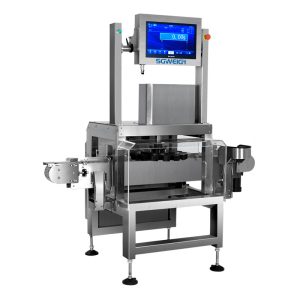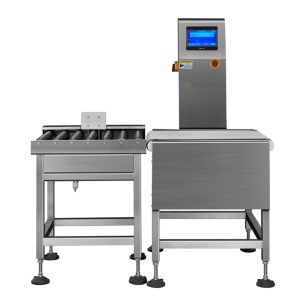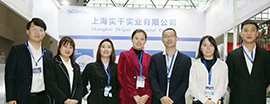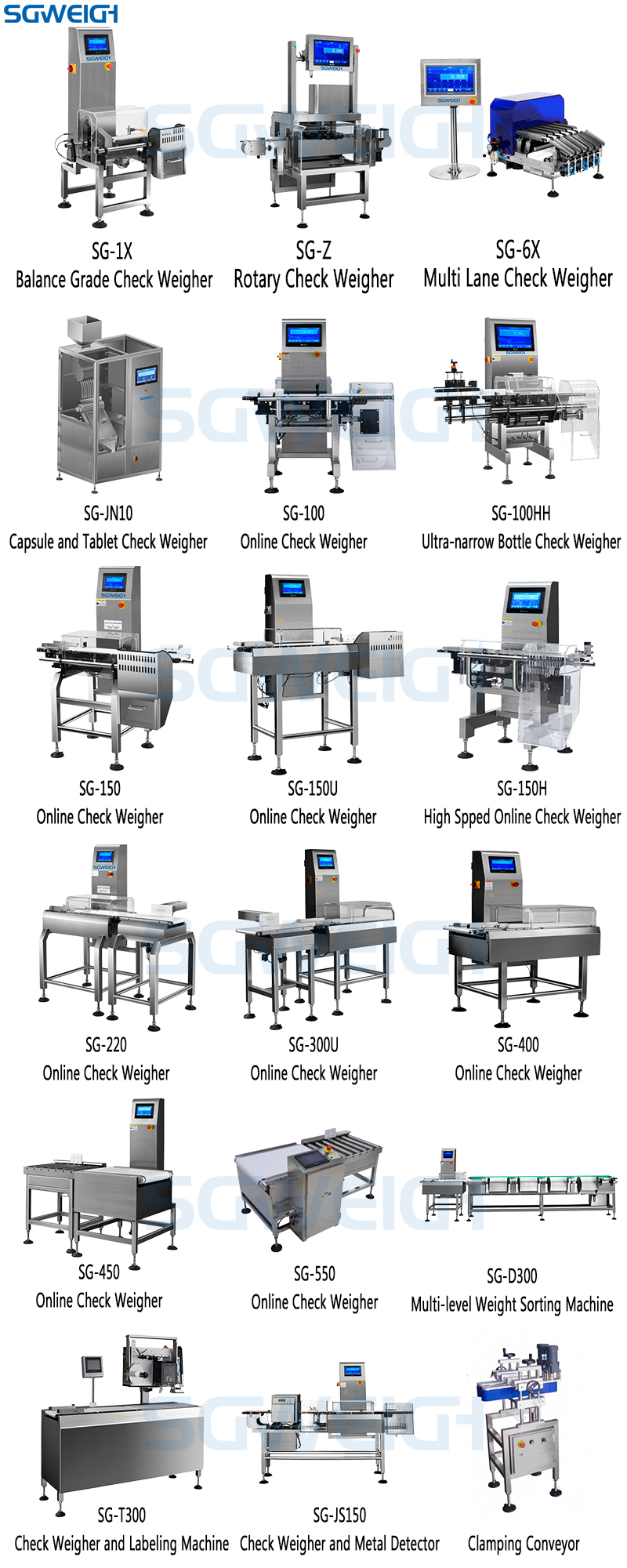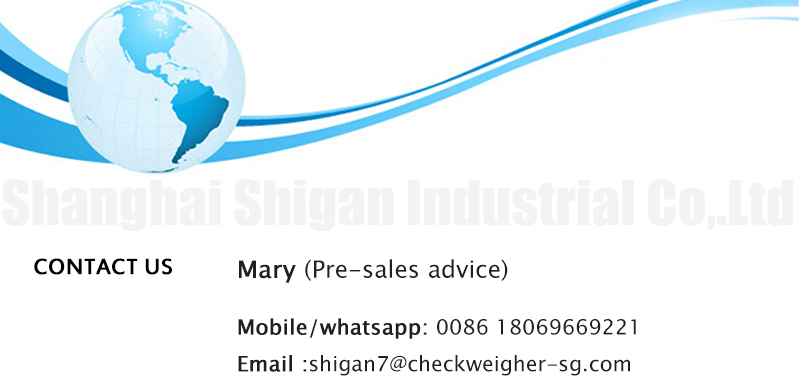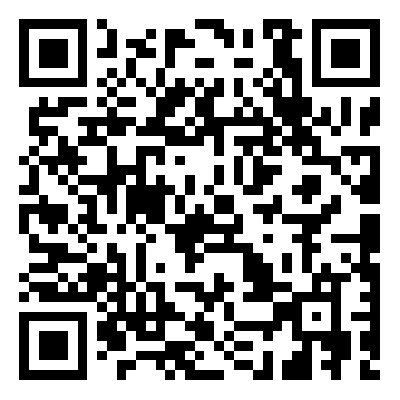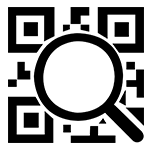What is the difference between a dynamic checkweigher and a static checkweigher?
A static checkweigher can only weigh items that are not moving (i.e. static). A static checkweigher cannot have any movement in the load cell, as it can take several seconds to stabilize. Additionally, any product movement will cause the load cell reading to oscillate, resulting in an unstable reading.
Dynamic checkweighers (check weigher system) can weigh items while in motion (i.e., dynamically) and then reject products that do not meet specifications. Checkweighers must obtain accurate weighings in fractions of seconds. Parameters such as product content, product transfer and overall system design are more relevant to checkweighers as moving parts can affect weighing. However, over the past decade, technology has advanced significantly to the point where dynamic weighing is almost as accurate as static weighing.
Why are so many companies using automatic check weighers now?
Automatic check weighers are ideal for ensuring product consistency. They do this based on product weight. They provide 100% product sampling. Checkweighers can alert management to underfilled containers, preventing potential recalls. They can also alert supervisors to overfills, which can result in lost revenue for the company. Checkweighers accomplish these tasks consistently, reliably, and can pay for themselves in less than 12 months.
What is the payback for a checkweigher machine?
While every situation is unique, the payback for a checkweigher machine is typically less than 12 months. Companies, such as food processors, can fill millions of containers per year. Being able to identify overfills of a few grams per container and adjust the fill can save the company tens of thousands of dollars per year.
Which industries use high speed checkweighers?
High speed checkweighers can be found in almost all industries.
1. High speed checkweighers are use in the electronics and toy industries: parts missing detection (such as toy parts missing detection, screw package missing detection, TV and set-top box and other products missing parts detection);
2. High speed checkweighers use in the daily chemical products industry: cosmetics missing detection, whether a bag of laundry is missing, whether a box of toothbrushes is missing;
3. High speed checkweighers use in the hardware and other industries: stainless steel tableware, knife missing detection;
4. High speed checkweighers use in the pharmaceutical industry: drug bag missing detection, whether a box of drugs is missing instructions, whether the net content of drugs is qualified;
5. High aspeed checkweighers use in the food industry: instant noodles and other convenient foods missing material package detection, whether a box of biscuits is missing quantity.
If the quality of your process can be measured by weight, which covers about 99% of all processes, a high speed checkweigher might be the solution for you.
How to select the model of checkweigher machine?
1. Determine the series according to the size, weight range and purpose of the products you need to sort.
For example, if the weight is less than 300g and the size is 150*90*30mm, choose model SG-150, belt width 150mm and range less than 500g.
2. Determine the level you need to sort, whether it is three levels or five levels. Different levels have different prices. The more levels, the higher the price. At present, our factory can sort up to 12 levels.
3. Determine the height and width (if any) of your existing assembly line, and the space required by our company.
4. Determine the functions you need to select; such as USB storage data, real-time transmission of weight data, alarm, etc.
In order to provide more accurate parameters, solutions and quotations, it is recommended that you contact the person in charge of our company to help you complete the selection.
What factors can affect the accuracy of a checkweigher?
Conditions that can affect the accuracy of a checkweigher include:
Ambient temperature changes
Floor vibrations from nearby machines
Air currents
Dust that settles on the scale during shift changes
Product buildup
Static buildup from moving products
Electrical noise from other electronic devices near the checkweigher (cell phones, walkie-talkies, etc.)
Electrical noise from the power supply.
How can these effects be minimized?
Clean frequently
Install draft shields to minimize airflow
Maintain a constant temperature environment
Install power conditioners to reduce electrical noise
Make sure all metal parts are well ground
Which products cause the most problems with high accuracy checkweighers?
Any product with contents that shake or vibrate can cause problems. This often includes containers with liquids, such as soups, beverages, shampoos, or concentrates.
Products with a high center of gravity can also cause problems, as the product may shake when transferred to the high accuracy checkweighers. This shaking can result in less time to obtain an accurate weight.
What steps can a facility take to improve checkweigher accuracy?
Installing a product guide before the checkweigher can help ensure product stability.
If product buildup on the checkweigher is a concern, use automatic tare
Are there any considerations when selecting product containers to improve checkweigher accuracy?
Use containers with a low center of gravity.
Containers with a rigid structure are better than those that can flow freely (i.e. rigid plastics vs. free-flowing plastic bags)
More information about checkweigher machine or you want to get free checkweigher solutions, please contact us!

